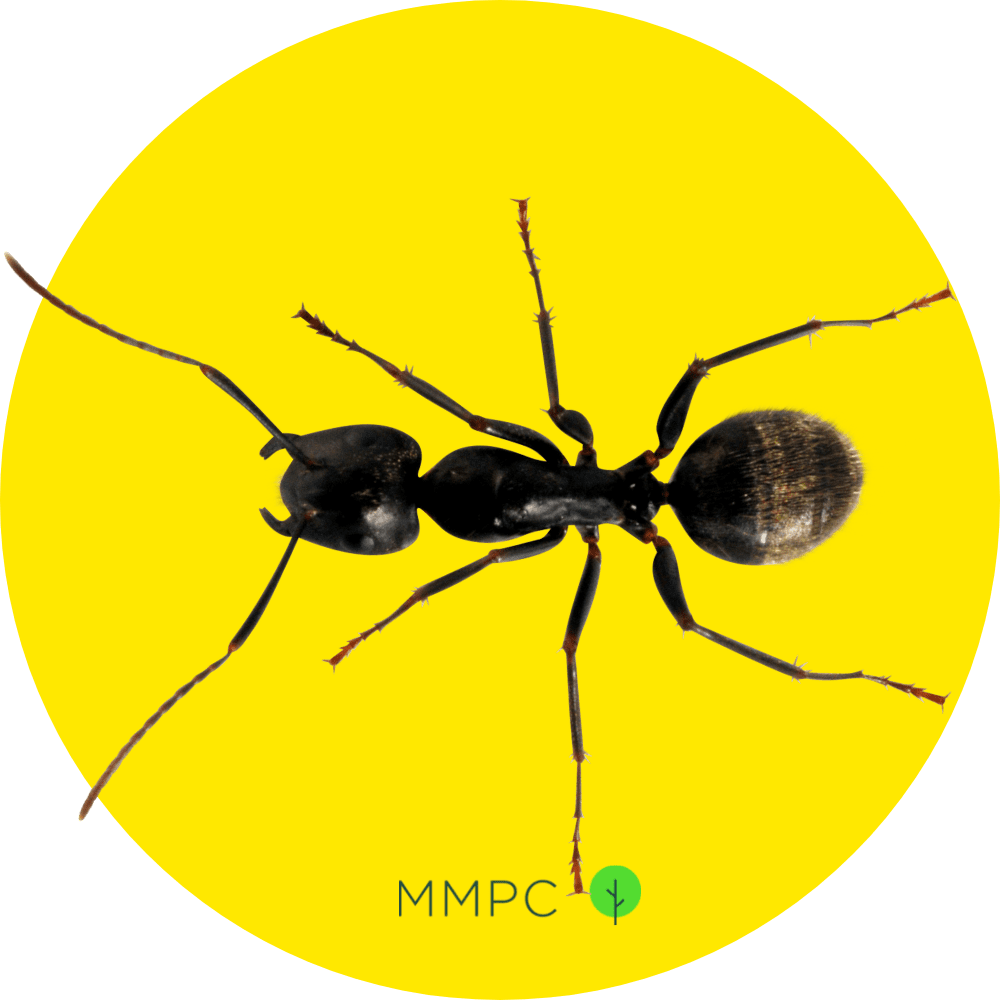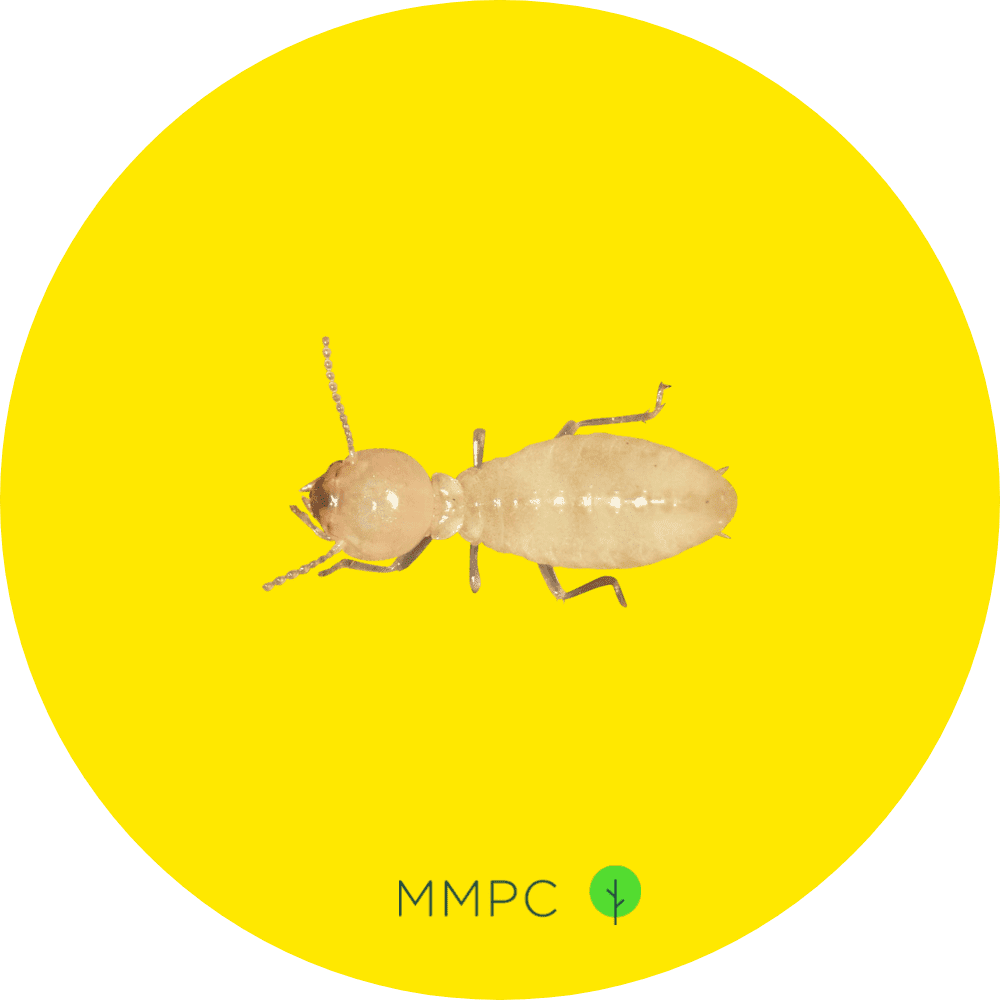
Carpenter ants and termites are common pests that cause damage to the wooden structure of your home. Knowing if you’re dealing with carpenter ants or termites can help you determine what to do in order to get rid of them.
What Are the Differences between Carpenter Ants and Termites?
1. Appearance
One of the more distinguishing characteristics between carpenter ants and termites is the size of their waists. Carpenter ants have a slender, pinched waist that forms a clear separation between the upper and lower parts of their bodies. Termites have a broad waist that makes their bodies look more uniform.
On the top of their heads, carpenter ants have elbow-shaped antennae that are divided into two large segments, while termites have moniliform antennae resembling a string of beads.
In terms of color, most carpenter ants are black or dark brown, although some can also be red or yellow. Termites, depending on their species and role in the colony, can range in color from creamy white to dark brown or black.
When it comes to the winged reproductive members of termite and carpenter ant colonies, also known as swarmers, you can identify them by looking at their wings.
Both carpenter ant swarmers and termite swarmers have two sets of wings: one set of front wings and one set of hind wings. On termite swarmers, both sets of wings are of equal size and length. But on carpenter ant swarmers, the front wings are much larger than the hind wings.
2. Signs
Both carpenter ants and termites can chew through the wood in your home easily and undetected. They dig out tunnels and galleries inside of wood, which weakens the wood and puts the structure of your home at risk.
One distinguishing sign of subterranean termites, which is the only species of termite native to New York, is the presence of mud tubes.
You can usually spot these mud tubes along the walls inside and outside of your home. They’re made from a combination of wood, soil, and saliva, and their purpose is to protect the termites and keep the moisture in as they move back and forth between their underground colonies and your home.
Subterranean termite damage can usually be compared to water damage due to the high moisture levels. The wood may look like it’s bending, sagging, darkening, or crumbling after these termites have chewed through it, just like it can after water damage.
A sign of carpenter ants (as well as drywood termites) is little piles of frass, or excrement, that resembles tiny pellets or sawdust. This is a byproduct of the wood particles they discard around their nests through small kick-out holes.
3. Behavior
Carpenter ants and subterranean termites are both drawn to wood and moisture. The main difference between the two is that termites actually consume the wood for sustenance, while carpenter ants don’t.
This makes carpenter ants less destructive than termites, since the damage they cause is limited to just excavating tunnels, whereas termite damage involves continuous, non-stop eating.
Carpenter ants can often be seen leaving their nests to search your home for food sources, which include sweets, meats, fruits, and even pet food. You’re more likely to see them crawling around the floor of your kitchen or pantry at night, since carpenter ants are nocturnal.
Termites, unlike carpenter ants, are much harder to spot since they don’t tend to venture out from their tunnels. The only time when you’re likely to spot termites is during swarming season, when winged termite swarmers emerge from matured termite colonies in search of mates.
Swarming seasons for both carpenter ants and eastern subterranean termites (that live in New York) usually occur in the spring. On the other hand, swarming seasons for drywood termites and dampwood termites occur during the summer and fall.
If there’s a colony inside or near your home, you might see these swarmers—or their discarded wings—near windows, doors, and light sources.
How to Get Rid of Carpenter Ants and Termites
Treatment for carpenter ants may involve the use of baits, wood injections, sprays, and powders. These methods can also work with drywood termites, which can often be found in similar locations as carpenter ants. You may need to use a combination of these methods, since these pests are often hiding deep inside wood in hard-to-reach places.
Subterranean termites are different, since they establish their colonies underground in the soil surrounding your home. Treatment usually involves the use of liquid termite barriers and termite bait stations. Learn more about subterranean termite treatments in our article: “What Is the Most Effective Treatment for Termite Control?”
About MMPC
Getting termites and carpenter ants out of your home can be a frustrating process, depending on the level of your infestation, and MMPC is here to help.
Our professional pest control specialists can help you locate and protect your home from these destructive pests. Give us a call today if you have any questions, or to schedule a treatment or inspection.


